Greetings, my readers! I decided to write this post for those who are trying to figure out how to connect an electric boiler to wiring. The article is devoted to heating devices using heating elements as heating elements. I will write about it separately. There are several options for performing this operation, and I will discuss them below in turn. We start, as you might already be used to, from simple to complex.
TEN and single-phase network. What to fasten?
This case is typical for dachas and village houses of old construction. First you need to generally understand what is at stake and the easiest way to do this is by looking at the following figure:
So, a single-phase electrical network has two conductors - zero and phase. The picture itself shows two ways to turn on the load - parallel and serial. These methods differ in how the initial voltage is divided between the elements. In most cases, heating elements are connected in parallel so as not to lose useful power, a serial circuit is only suitable for various specific cases. A block prepared for connection to one phase will look like this:
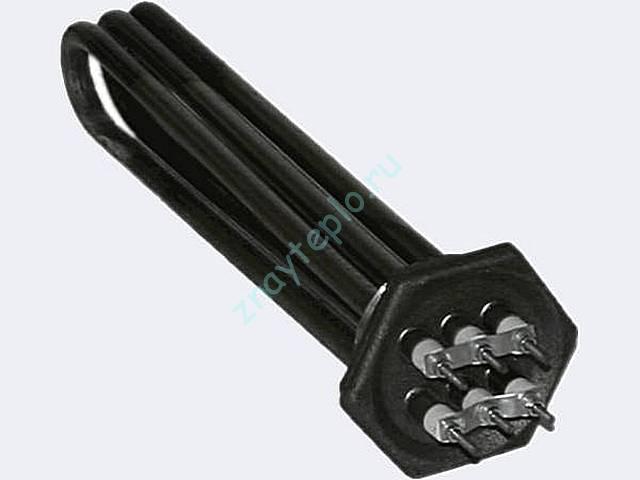

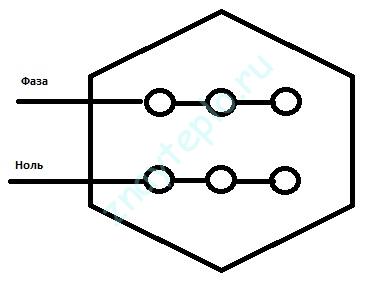

It is also worth paying attention to the choice of cable, but we will touch on this point a little later, and now let's move on to the three phases.
Two ways to connect the heating element to three phases.
"Three-phase" used to be something not very necessary and understandable for a simple layman, but in our time it has become a necessity for a private house. It is needed primarily for heating with electricity. Since the electric boiler has a large power (in most cases more than 6 kW), when using one phase, you will need to lay the wiring with a cable with a large conductor cross section. And it will be expensive, especially if the cable cores are made of copper. In a three-phase network, the conductor cross-sections will be noticeably smaller, for this reason, most modern electric boilers are connected to a "three-phase". Now let's talk about the main schemes for connecting heating elements to such a network.
Star.
This method is used if the heating element is designed for 220 V. In addition, the "star" requires that a neutral wire be connected from the shield. For clarification, consider the following figure:
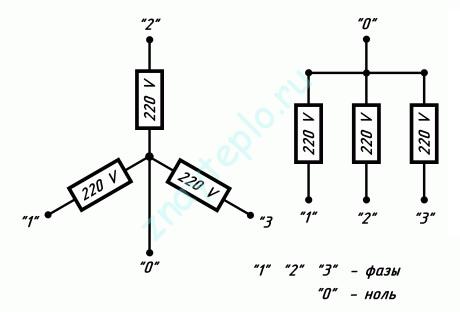

In this case, instead of two jumpers there will be one. And it will connect to zero, and the three remaining free ends will be connected to the corresponding phases. If you look at the block nut from above, then it will all look like this: 

Triangle.
This method is used to connect heating elements rated for 380 V. If suddenly you decide to put heating elements rated for 220 V in a “triangle”, they will simply burn out. Don't miss this important moment. The main difference between a "triangle" and a "star" is the absence of a neutral conductor. There are only 3 phases and nothing more. To better understand what is at stake, see below:
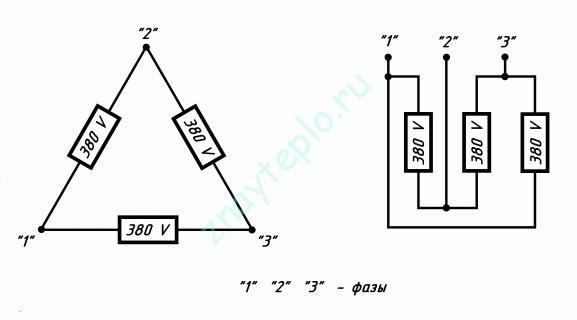

In the picture, everything looks simple and clear, but if you start connecting the contacts on the block nut, you get the following:
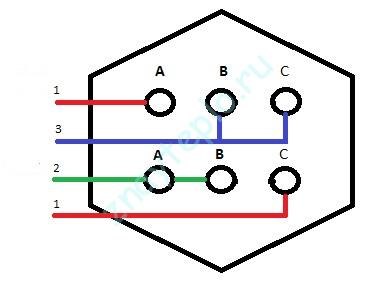

It looks complicated, but in fact it does not differ in any way from the top picture. The colored lines and numbers here indicate the phases, and the heating elements of the block are marked with letters.
The results of the article.
Connecting powerful electrical heating devices, such as an electric boiler, is a responsible matter.Mistakes can lead to serious consequences. Until the wiring burns out or a fire . Therefore, if you do not have the relevant skills, thenyou better contact an electrician with the appropriate approval group . All actions that you are going to do, you do at your own peril and risk. Remember this. That's all, write questions in the comments.

